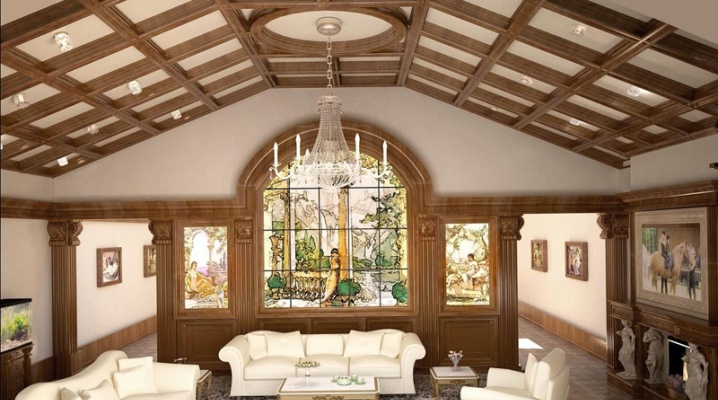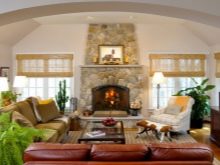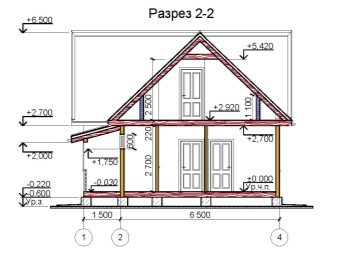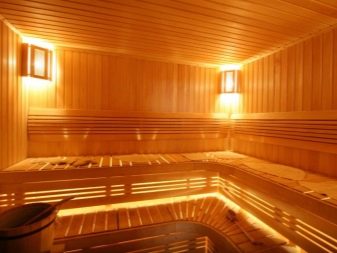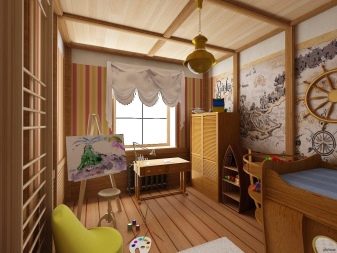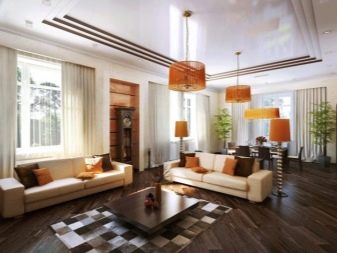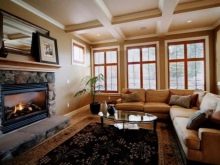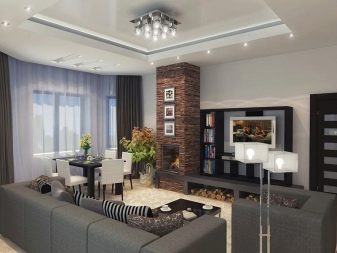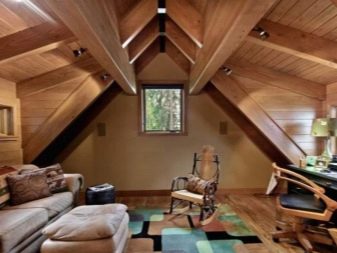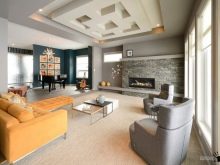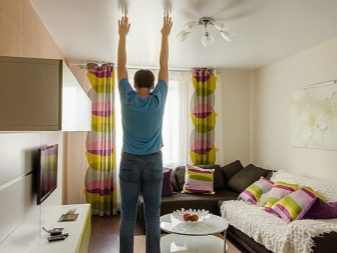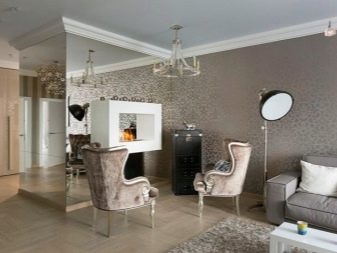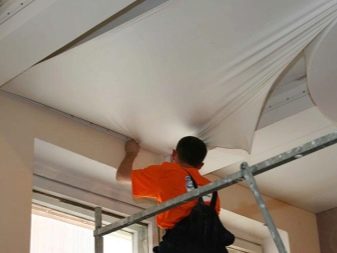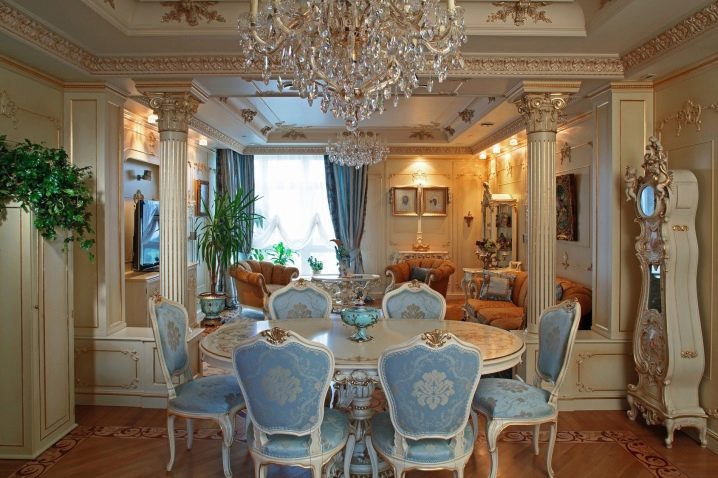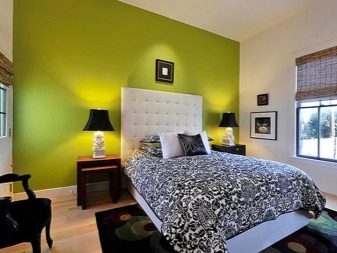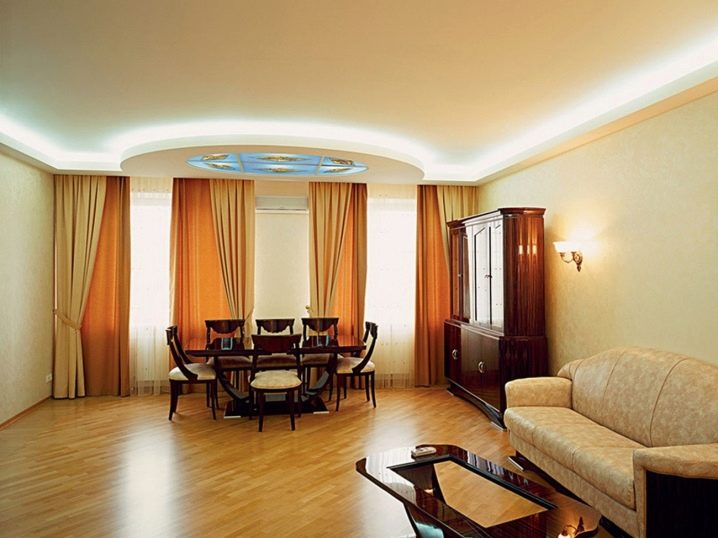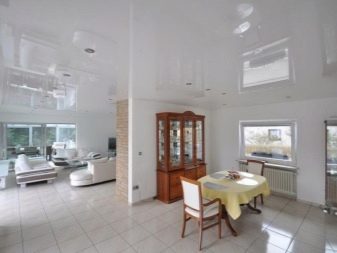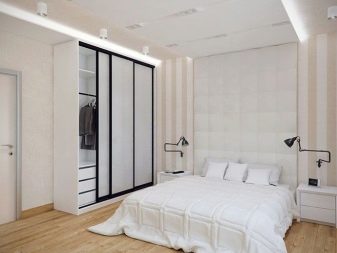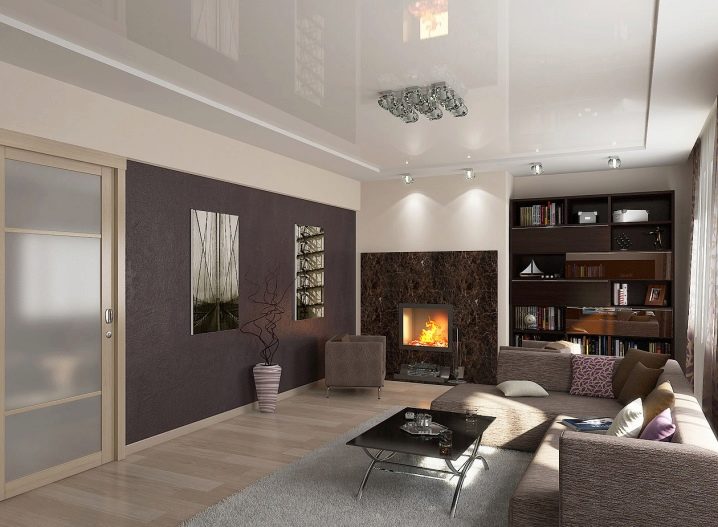What should be the height of the ceiling in a private house?
Ceiling height is an integral part of a comfortable stay and psychological feeling in the room. Generally accepted rules and regulations set this value depending on the type of structure. The apartments do not have to choose this height, it is set by building standards and averages 2.5-2.7 m. And if we are talking about a private house at the stages of construction and planning, then this parameter is given special attention.
Thanks to the correct calculations, you will not have problems with installing multi-tiered ceilings and placing any decorative elements inside the rooms.
Ceiling height depends on the purpose of the room.
The decision on the height of the ceilings should be taken at the stage of approval of the project at home. There are no standards as such for its size. However, it will depend on the purpose of the room. For example,for saunas and baths it is absolutely not appropriate to choose high ceilings, since the consumed heat will be distributed inappropriately, and all steam will be concentrated at the top.
For smaller living rooms, increasing the ceiling will result in an uncomfortable feeling. Rooms with low ceilings are best suited for children, bathrooms and kitchens that do not require a huge area. But living rooms and halls, rooms reserved for a library or a warehouse will look great with the highest possible ceiling in large houses.
Generally accepted standards and regulations
The height of 2.7 m in a private house is taken as the generally accepted value. It will be quite enough for a comfortable stay, as well as cleaning and repair of the room. With such a height, it is quite possible to design multi-level ceilings, both suspended and suspended. However, if you do not want to clutter up the surface of the ceiling with various structures, but simply paint it, a height of 2.5 m is also suitable. These are privately accepted standards.
Standards for the construction of modern buildings are governed by various norms of sanitary regulations and the requirements of state standards. They can be found in the construction rules - SNiPs.In houses where people live permanently, these rules set a minimum value of 2.6 meters. Guided by these norms, you should know that many of them have already become invalid and are not recognized by law, but only by sets of rules. Despite this, many designers still use them. In the new urban planning rules of architectural design, the ceiling height is not regulated. Therefore, you can choose it at your discretion, without violating fire safety requirements.
There is an opinion of the owners of private houses, that the greater the height of the ceilings, the better. It is believed that at the same time it is possible to equip a room in various ways and according to your taste. But this is far from the case. Imagine a room in a residential building, the walls of which are more than three meters. The total cubic footage of such a room will be larger, which will make it more spacious. But in the winter period, it will take a lot of money to heat such areas.
According to the laws of physics, warm air always strives upward, and cold air spreads on the floor. And even with the abundant use of heating devices, the heat will be spent for other purposes.In addition, the heat that accumulates at the top of the room will destroy the attic and the roof itself. If it is wooden, then the material will soon crack and crack.
Standard normal height in a brick, frame or log house, as well as in a two-storey country cottage must comply with the SNiP. These rules are the same as the first. So on the second floor.
Room geometry
Expert opinion converges at a ceiling height of 2.6 to 3 meters. In order to choose the right from this range, it is necessary to determine the layout of the building and its use. An important role is played by seasonal maintenance at home. If you are planning to build a cozy summer house with small rooms, feel free to choose a height of 2.6 meters. For such houses are not characterized by huge living rooms and spacious rooms. Therefore, ceilings do not need elevation.
If the house is intended for year-round living, it will be appropriate to look spacious bedrooms and a large living room. In this case, you can not do without the high walls, especially if the layout of the rooms provides for the placement of bunk beds.
Optimum ceiling height format
Every owner of a house under construction wants to choose the optimum height for the rooms of his house. It must be remembered that the house has yet to be built, and then to maintain and care for its space, and not just to rejoice in its magnificence. To choose the best option, stick to three components:
- your desires;
- ergonomic rules;
- construction standards.
Everything is clear with our desires, and they are quite diverse, so they do not need to be discussed. But with ergonomics should be acquainted at least in general terms. This scientific discipline studies the effective interaction of a person with the space around him in order to maximize his functions. Therefore, when choosing a height, you should have an idea about the purpose of the room, the location in it of household items and decorative elements.
To choose the best option, you must rely on the area of the rooms. There is a rule: the larger the area, the higher the wall. A small room with a huge ceiling will look ridiculous, and in a large hall the ceiling of two and a half meters will put pressure on its space. There is another way to determine the desired height.To do this, you can choose the highest member of your family and ask him to stretch his arms up. Add to its height 30-35 mm, and adding up to get the optimal value.
The pros and cons of high ceilings
Disadvantages:
- the cost of designing and building a house will become more expensive. In addition, you have to spend money on materials for interior decoration;
- to organize the heating system will not be easy, but in the process of using it it will begin to require large monetary costs;
- any repair of the ceiling will require considerable effort. Workers will have to use additional facilities in their work, which will also affect the price and repair time;
- domestic difficulties. When cleaning the upper half of the room will require skill. Replacing the light bulb can be a big problem.
Despite this, high ceilings have gained immense popularity due to their advantages:
- high altitude has a special atmosphere and free feeling in the house;
- unlimited imagination in the decoration of the ceiling decoration. High walls will allow you to create a unique ceiling design, using two or three-tier structures made of plasterboard.Large-scale ceiling can be decorated with various decorative stucco, which will look luxurious with a classic style or medieval baroque.
Even such a huge space requires effective use. Designers recommend applying the “rule of three” - visually split the walls into three sections. At the bottom place additional trim, for example, sheathe it with a stone or clapboard. Decorate the second section with paintings and shelves.
These items should not be placed above eye level to prevent the feeling of emptiness. Third - leave untouched. With this layout, the ceiling will seem even higher! In the design of lighting must use massive chandeliers. They emphasize the elegance and elegance of the room.
So that the space does not inspire boredom, make a bold decision - paint one of the walls in a bright contrasting color! This emphasis will add uniqueness.
Cons and pros of low ceilings
Disadvantages.
- Sensations of pressure space will always accompany a room with a low ceiling. It will be uncomfortable to be.
- Limited use of hanging chandeliers. There are houses where the ceiling height is limited to two meters.In such rooms, the chandelier will have to get round.
- Limited ability to create architectural compositions. If you want to create a multi-level design in a room with a low ceiling, you will have to seek help from professional designers. Create such a ceiling will be difficult, but possible.
Pluses of low ceilings are in the minuses of high. Therefore, we will not repeat. Let's take a closer look at what the designers will advise in these cases. First, cross out the following from the interior:
- chandeliers, lampshades and massive floor lamps;
- ceiling moldings and three-dimensional decorative elements;
- massive wardrobes, high tables and huge sofas;
- painted curtains attached to the walls. The best option would be discreet plastic, attached to the ceiling.
Place a bet on the texture and color of the room. White is the perfect solution. This color can work wonders, pushing the boundaries of space. Use its shades on the walls and ceiling. Add more gloss and mirrors to the interior. The shiny surface perfectly reflects objects, visually adding cubic meters to the room. Installing a glossy stretch ceiling would be an effective solution.
If you do not want to see your room in white, other light shades will do. With this option, you need to know that the color of the ceiling should not be darker than the walls. Otherwise, he will present himself.
These tricks are able to give even a small ceiling a large space. And the last. At the stage of building a house, note that the ceiling height will be designed in draft form. After finishing it will be reduced. Especially the height will change when installing heated floors or superstructures of multi-level structures.
All about the optimal ceiling height in CIP-house, see the following video.
